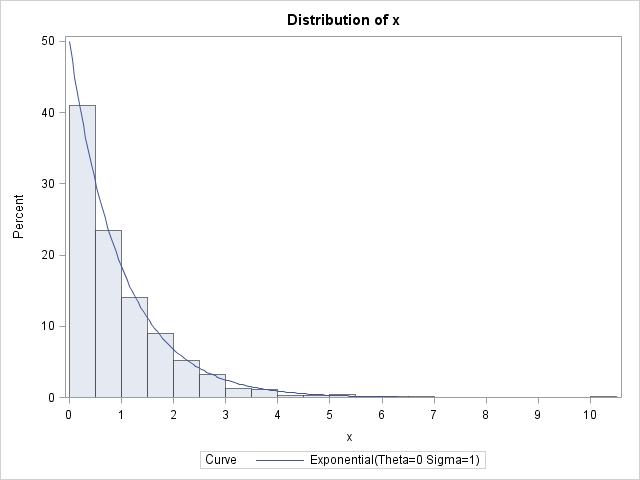
In the text we first convert x scores to z scores using the formula z (x)/ and then find probabilities.
HOW TO FIND CDF HOW TO
We also see how to use the complementary event to find the probability. Probabilities with the normalcdf Function. P(X £ 1) is the probability that the number of throws until we get a 6 is less than or equal to 1. Given a discrete random variable X, its cumulative distribution function or cdf. In the above example where the die is thrown repeatedly, lets work out P(X £ t) for some values of t. In other words, for each value that X can be which is less than or equal to t, work out the probability that X is that value and add up all such results. The normal distribution is used to find significance levels in many hypothesis. The cumulative distribution function (c.d.f.) of a discrete random variable X is the function F(t) which tells you the probability that X is less than or equal to t. The following is the plot of the normal cumulative distribution function. P(X = 2) = (5/6) × (1/6) (if we throw the die twice before getting a 6, we must throw something that isn't a 6 with our first throw, the probability of which is 5/6 and we must throw a 6 on our second throw, the probability of which is 1/6) The cdf of Y Y is FY(y)P(Yy)P(g(X)y) F Y ( y ) P ( Y. P(X = 1) = 1/6 (if we only throw the die once, we get a 6 on our first throw. 5.6 Distributions of transformations of random variables Determine the possible values of Y Y. Let X be the random variable representing the number of times we throw the die. Use the CDF to determine the probability that a random observation that is.

Find the probability density function for the number times we throw the die. Empirical cumulative distribution function plots are a way to visualize the. In the above example, P(X = x) = 3C x / (2) 3 (see permutations and combinations for the meaning of 3C x).Ī die is thrown repeatedly until a 6 is obtained.

Quite often, the probability density function will be given to you in terms of x. In the above example, we could therefore have written: Here, P(X = 0) = 1/8 (the probability that we throw no heads is 1/8 ). So P(X = 0) means "the probability that no heads are thrown". So in the above example, X represents the number of heads that we throw. The CDF charts, or S-Curves, are shown as line charts (Figure 4). The z-table works from the idea that a score found on the table shows the probability. This concept is used extensively in elementary statistics, especially with z-scores. The random variable (r.v.) X is the event that we are considering. Finally, the inverse cumulative distribution function (ICDF) is used to compute the. The cumulative distribution function gives the cumulative value from negative infinity up to a random variable X and is defined by the following notation: F (x) P (X x).

The usual notation that is used is P(X = x) = something. Complement of the cumulative distribution function (upper tail) of the Cauchy distribution which is also Lorentzian distribution. The random variable X has probability density function (pdf) f(x) 0 otherwise (a) Find the value of c. Put simply, it is a function which tells you the probability of certain events occurring. (b) Find the cumulative distribution function. The probability density function (p.d.f.) of X (or probability mass function) is a function which allocates probabilities.

The variable is said to be random if the sum of the probabilities is one. In this example, the number of heads can only take 4 values (0, 1, 2, 3) and so the variable is discrete. The probabilities of each of these possibilities can be tabulated as shown:Ī discrete variable is a variable which can only take a countable number of values. \[P\begin =0.4\).This section covers Discrete Random Variables, probability distribution, Cumulative Distribution Function and Probability Density Function.Ī probability distribution is a table of values showing the probabilities of various outcomes of an experiment.įor example, if a coin is tossed three times, the number of heads obtained can be 0, 1, 2 or 3. A discrete random variable \(X\) whose probability distribution function is:


 0 kommentar(er)
0 kommentar(er)
